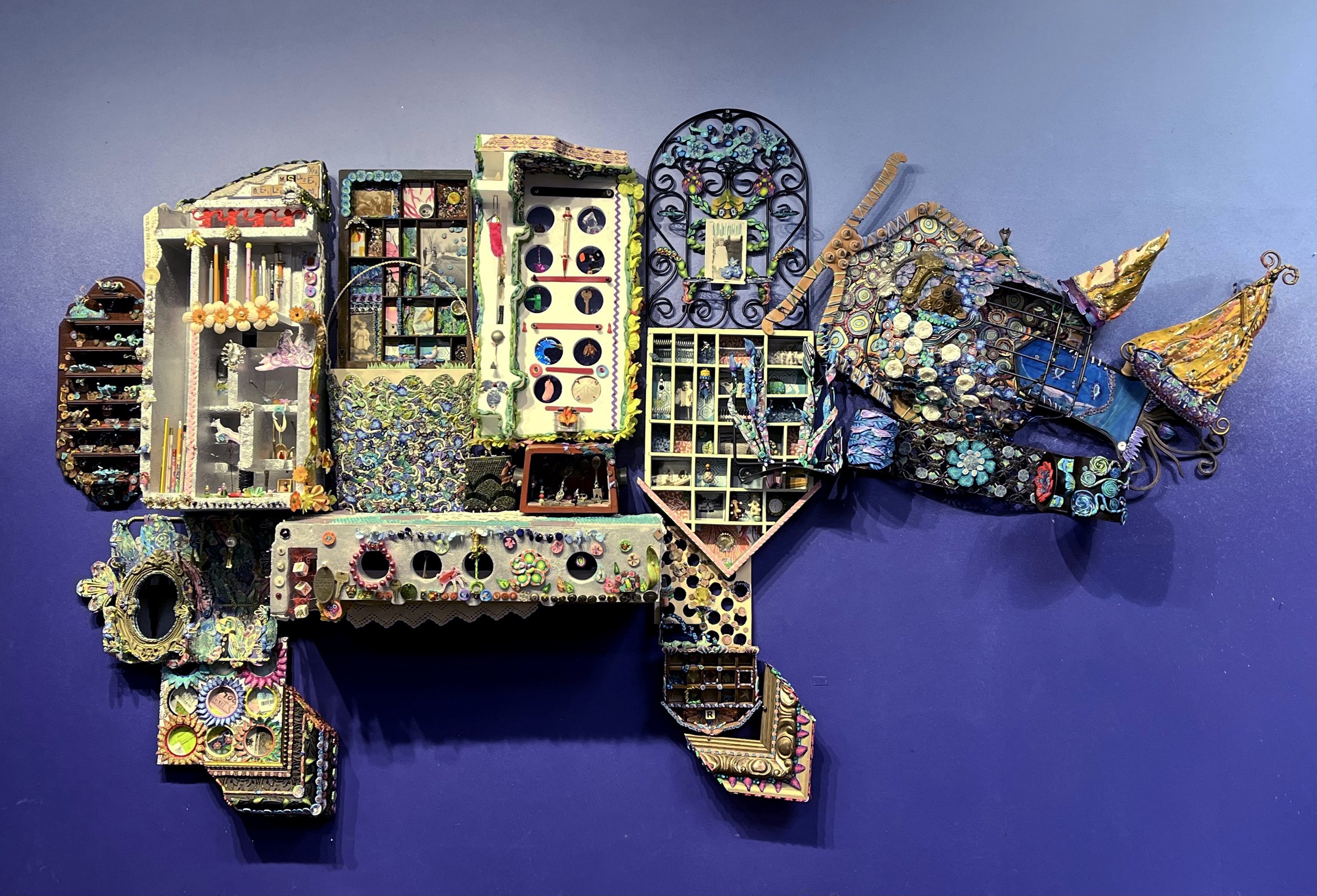As we head into our third year of the pandemic and watching the war unfold in Ukraine many of us are looking around us and thinking about what we can do to make the world a better place. We read about how we as humans are destroying the environment and looking at our own lives to see what we can change. But it’s not an easy fix. Many of us are stuck with a cognitive dissonance about how to have our lives the way we want them and also make the world better for generations to come.
“If Memories were Birds”, 2021
I have been working with polymer clay for nearly 30 years- it’s a plastic- I love it- it appeals to my innate need to squish colors in my hands. But it’s a plastic and all around us we hear about how evil plastic is and how it never goes away. The more I hear this I try to talk myself into giving it up but I also know the joy my work brings to people. I tell myself my art is not plastic pollution or one time use like the tons and tons of plastics produced by large companies. But still how do I create art that tells a story about getting rid of plastics and other harmful materials while I am using the very same material. This is the struggle I am facing as I create my next body of work.
One of the directions my work has taken since the beginning of the pandemic is to use more found objects- especially those that I already have in my house or that are given to me. Some found objects come from thrift stores and antique stores but are never purchased new. I am especially challenged by using a material we all hate- styrofoam. I have found that the large forms of styrofoam in packaging are really beautiful shapes and it has some very positive qualities when it comes to sculpting and adding other found objects to it.
“The Rhino with too many Ideas”, 2022
I would like to explore this “cognitive dissonance” that I am feeling and I expect many of us are in this world that we are both trying to save and live our best lives in. My next series I’m planning will be to creating pieces based on animals that are affected by the way humans interact with the environment. I’m imagining these pieces will be of varying scale from life size to larger than life size and be made of found objects and polymer clay. My most recent piece “The Rhino with too many Ideas” is an example of how I will use a variety of found objects to these animals. I’m just starting a giraffe piece which will be about 8 feet tall. I collected many of the pieces from thrift stores and as I create my main question to myself is how am I balancing the use of polymer clay with the found objects.
My good friend Barbara Bridges introduced me to the concept of cognitive dissonance and she always says “Embrace it”. As I head into my next body of work I will certainly be repeating her mantra because it seems this is the only choice I have!
Layout plans for my giraffe. I took photos of all my mixed media pieces and printed then out to collage then together. Keep an eye on my social media platforms to see this guy come to life.


